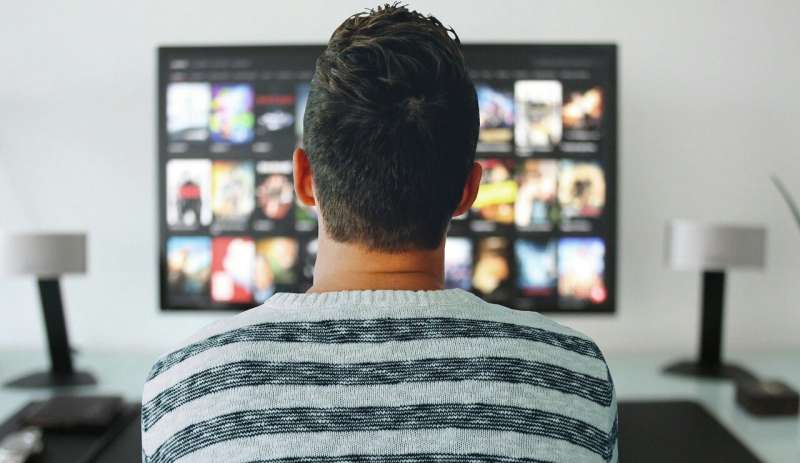Credit: CC0 Public Domain
If you had a feeling you binged more streaming video last year, you likely did—and you had a lot of company.
Across the globe, time spent streaming video increased by more than half—an increase of 58%—during the last three months of 2019, compared to the same period in 2018, according to streaming tracking firm Conviva.
Bingeing and streaming time grew even more in the U.S. (61%) and in Europe (65%), finds Conviva's "The State of Streaming" report. The Foster City, California research firm tracks more than 500 million unique viewers and 150 billion streams annually on more than 3 billion applications.
Net TV viewing choices increased during the fourth quarter of 2019 including the arrival of new streaming services such as Disney+ and Apple TV+ in November. And more options are on the way later this year including Comcast and NBC Universal's Peacock and HBO Max from AT&T's WarnerMedia.
"We've barely begun to scratch the surface of streaming's impact not only on consumer behavior, but also on the multi-billion dollar advertising and entertainment industries," said Conviva CEO Bill Demas in a statement accompanying the report.
Across all of the Americas—North America, Central America, South America, and the Caribbean—streaming time increased 63% over the October-December 2018 period. In Asia, streaming increased 10%.
In the U.S., streaming time spent on mobile and tablets grew the most (67%), with streaming on TV rising 53%, and increasing computers 21%, Conviva found.
Nearly two-thirds (63%) of streaming video watching happens on TVs, across the Americas, the report says. Mobile viewing accounts for 21% of viewing, with computers grabbing 7% of viewing hours.
On-demand content remained the preference of streamers, accounting for 66% of global viewing time, up from 59% a year ago, according to the report. Live video streaming increased from a year ago, but overall accounted for 34% of viewing time.
Viewers likely saw better quality streams, too, according to Conviva, which has media companies such as CBS, HBO, Hulu, Sling TV, Univision, and WarnerMedia as clients. Worldwide, video streams had 37% less buffering and 21% higher picture quality, according to the report. Video start failures fell by 12% and video start times increased 6% faster, due in part to live programs matching start qualities of on-demand video.
Streamed ads did not see an equivalent jump in quality. More than one-third (36%) of all ads worldwide failed to play as intended, the report says. And it took commercials nearly twice as long to start.
Video services that rely on streaming ads for revenue will need to improve that aspect, Conviva's Demas said.
"As with any disruptive technology, growing pains are inevitable," he said. "The companies that win the streaming wars will be those able to offer viewers a fast, clear, reliable experience regardless of where in the world they live, or what device they use."
(c)2020 U.S. Today
Distributed by Tribune Content Agency, LLC.
























